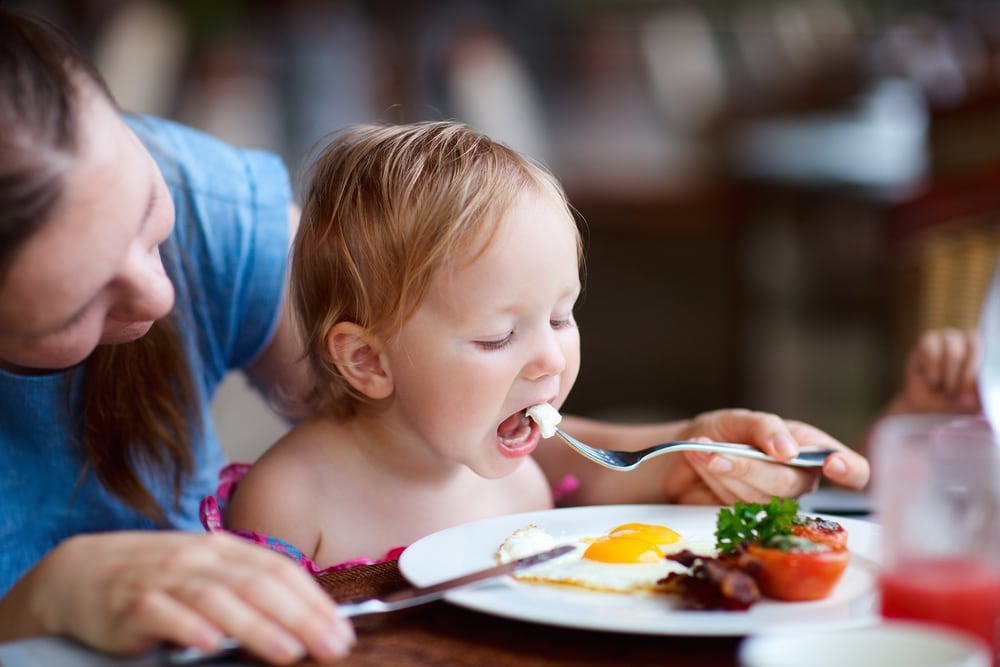Family mealtimes are a great place for children to learn healthy eating habits as well as social, communication and fine motor skills, which is why Story House is committed to providing family style dining from babies to kindergarten in our centres.
Family dining helps children develop healthy eating habits because children learn through social observation and imitation. So, watching their family eat at home, or their friends at childcare, helps them learn about what and how to eat, even babies benefit from family dining!
The most important part of eating is the conversations. In any culture food and conversations go hand in hand, no matter what language is spoken.
Preparing a meal with your child is a wonderful way to connect, enjoy each other’s company, produce something you can eat and support their sense of agency!
Healthy eating as a family involves more than just food
Eating is integral to our daily routines at home and childcare. Providing children with opportunities to be involved in meal preparation opens many doors to learning.
And it’s not just about the cooking and eating!
Choosing what to cook and going to the shop to buy the ingredients is also part of the experiences, as is washing up and tidying away at the end of the meal.
Children can be involved in all parts of this sequence, learning different things from each phase, literacy skills writing a shopping list, executive functioning skills remembering items to buy and finding them in the supermarket, measuring and maths skills while following the recipe, and turn taking as they stir and mix to name a few.
Role modelling healthy food habits is a great way to support healthy eating in children. Children observe and follow from the guidance of adults, if we talk about and eat food to fuel our bodies for exercise and play then children understand the importance of fuelling their own bodies.
Helping children understand their own body rhythms is also an important part of learning about nutrition, knowing if your body is hungry or thirsty by reading the cues given and then acting on them.
As the parent you can communicate with your child, especially if they have just finished their meal, “Are you thirsty rather than still hungry, maybe you can have some water and see if that helps?
Practical tips to encourage eating together as a family
If you don’t already eat together, why not try it one night a week and see how it goes? Here are some tips to get you started:
- Try providing all the foods for the meal on the table in serving dishes and allowing children to serve themselves.
- Provide opportunities for children to feel empowered about food. Involve them in shopping, cooking, setting the table and washing up/clearing away.
- Provide preferred and non-preferred/new foods at each meal. Talk about which foods you are selecting and why using positive descriptive language.
- Describe the foods you are eating, crunchy, sweet, smooth and avoid saying yummy or yucky.
- Ask children what they know about foods and eating.Hopefully they will tell you about family dining at childcare and how they serve themselves, what they eat and what their friends eat!
Some great information on nutrition can be found on the Nutrition Australia website.
https://naqld.org/services/healthy-at-home/
Related Articles
A Guide to Healthy Eating for Children
Effective Communication Skills with Children
Why is Routine Important for a Child?


